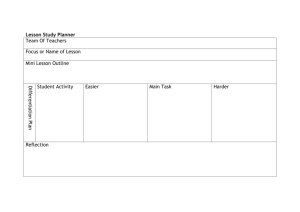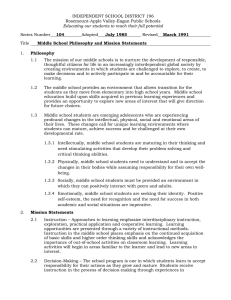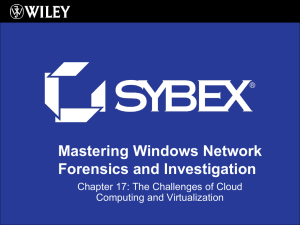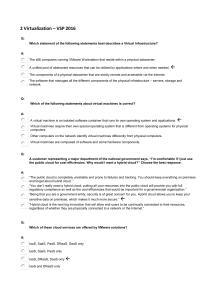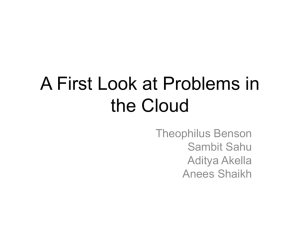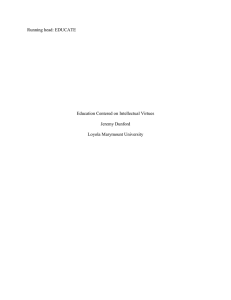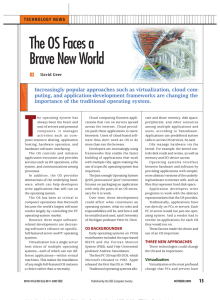Research Problem
advertisement
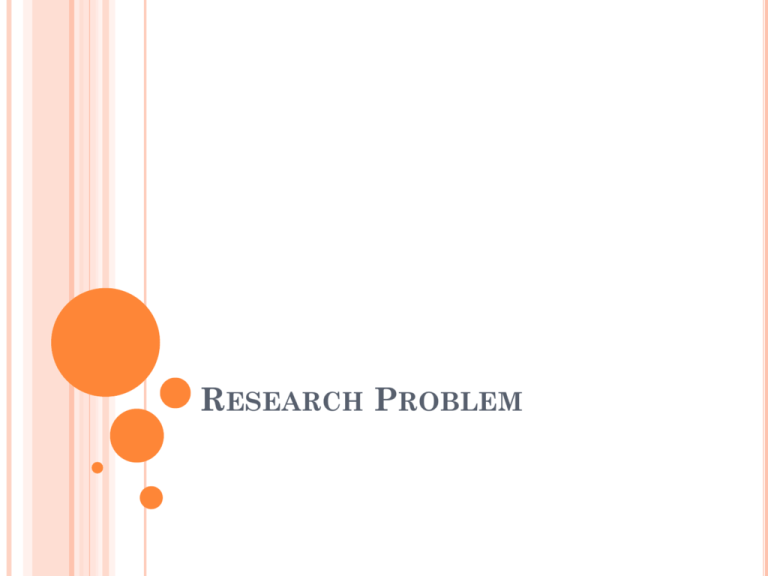
RESEARCH PROBLEM RESEARCH PROBLEM A problem in simple words is some difficulty experienced by the researcher in a theoretical or practical situation E.g. What is the fastest algorithm for multiplication of two n-digit numbers? choice of a suitable problem is difficult SOURCES TO A RESEARCH PROBLEM Know the field Study of Relevant Literature on the Subject Discussions with persons having rich practical experience in the field of study Daily problems Technological changes SELECTING A RESEARCH PROBLEM Get from Literature and then replicate the research with modifications – population, geography, method, etc Apply an existing technique to a new domain such as borrowing from engineering Population gravity Model from Physics Gravity Model Address Contradiction and Ambiguity Challenge existing Findings THINGS TO KNOW ABOUT R. PROBLEM Is the problem interesting? Is it new? Will it add to knowledge? Is it feasible? Has anyone else a prior claim to it? GOOD QUALITIES OF RESEARCH PROBLEM Research statement written clearly Problem stated in grammatically complete sentences. Problem has clearly stated limitations Statement has potential for leading to important results. The statement will lead to the analysis of data. The problem is focused enough to lead to an answer with reasonable effort. CONT’D Be sure that the topic chosen is neither too vague nor too broad in scope. Define any special terms that must be used in the statement of your problem. Problem has been reviewed by someone else who provided feedback. CONDITIONS FOR SUCCESSFUL RESEARCH PROBLEM Importance Immediate Application Feasibility or Amenability Availability of Data Availability of Other Facilities e.g. laboratory facilities Experience in the Research Problem EXAMPLE - MOBILE APPLICATION - HCI Mobile phones have become an unmissable tool in society’s everyday life. According to the study published by Telefonica (European broadband and telecommunications company) [1], nearly 74% of people with an intellectual disability aged 15-64 own or use a mobile phone. Additionally the number of touch-enabled smartphone devices has increased considerably in recent years [2], as well as the number of existing applications for operating systems. CONT’D When developers create a new application, it usually follows the basic rules of user interface design, which sometimes implies an accessibility problem, especially for people with intellectual disabilities, due to some specific designs. An Intellectual disability is a broad concept encompassing various intellectual deficits, i.e. individuals who are mentally challenged [3], have specific learning disabilities or suffer from problems acquired later in life through sustained brain injuries or neurodegenerative diseases like dementia [4]. CONT’D One possible cause of this problem might be due to the functional impairment experienced by the class of disabled mobile phone users. The nature of this problem is inherently complex and results in difficulty grasping the underlying problems, which in turn leads to a lack of understanding among mobile phone designers and developers. What are the difficulties that intellectually challenged people face when using mobile phones? What are the characteristics of a disabilityfriendly mobile interface? CONT’D --- HYPOTHESIS One possible approach to the problems disabled mobile phone users experience is to add additional requirements to the development of mobile phones. Method ?? The specific set of requirements needed can be found by involving intellectually challenged users in the design process starting at the requirement stage and ideally throughout the entire development phase as well ANSWER TO QUESTIONS The proposed set of requirements is described below: Eliminate non-essential images/buttons/functions: Be critical of the purpose of any image/button/function. Is it just there purely for aesthetic purposes or does it convey a practical one? Components like images, buttons or text boxes must be of a suitable size so that they can be easily seen or pressed, e.g. the keyboard display size. Etc …. RESEARCH AREAS IN COMPUTER SCIENCE Program structure -- it evolves from procedural languages, then object oriented programming. Now program structure is represented as a hybrid mixture of loosely typed languages, open source libraries, and decentralized multithreaded cloud architectures over multi-layer data representations. What are the central patterns underlying the optimality of these new architectures? How are open APIs changing the definition of an application? CONT’D Virtualization -- Time-sharing operating systems and virtual memory were the first attempts at virtualization. Then it was the virtual machine for software execution (e.g. Java VM, Microsoft CLR). Then the virtual machine architecture that enabled cloud computing. How far can virtualization as an approach to abstraction go? CONT’D Statistical machine learning -- The use of statistics against large data sets has taken over artificial intelligence. This has been proven in industry as well (Google, collaborative filtering, ad targeting, "big data"). This area of math has also taken over theoretical neuroscience, not to mention computer vision. CONT’D representation of data at scale -- How do you represent data when there is too much to fit in one database and millions of people are accessing it simultaneously? Many hybrid complex data structures have evolved that include clever caching, layers of servers, NoSQL, sharding, inverted text indexes, and cloud base archives. What ties all these patterns together? CONT’D Computer security -- Computer security is the central contact point at which the irresistible force of openness meets the immovable object of privacy. Whether this is encryption, security layers, permission models, or system integrity techniques, the future is both open and protected. How to achieve both? CONT’D Network models -- Networks and the graphical models that underlie them have become profoundly complex. Networks now include social networks, computing node networks, web-page link graphs, network data models, and neural networks. Network structures are unwieldly to analyze, but central to the future of computing. ASSIGNMENTS Browse three research articles in computer science Identify their research problems Why the researchers say they are problems. What justifications they forwarded What was the contribution of each paper for theory and practice What methods they used to solve their research problems


